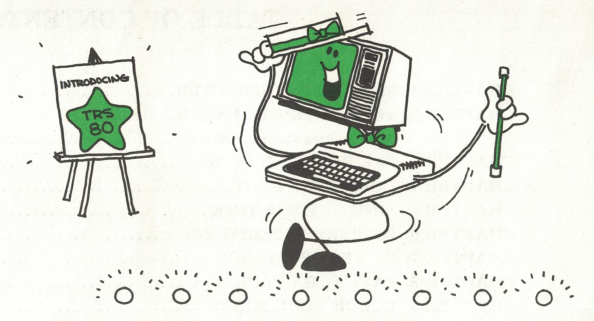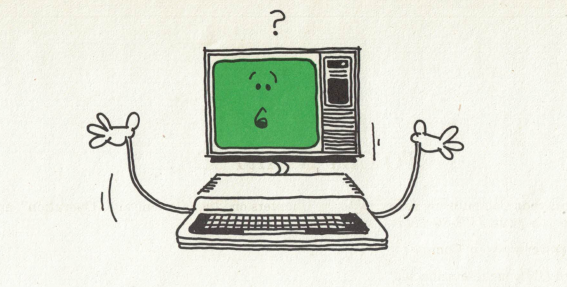
Known to it's fans as the “CoCo” or “80C”, the Tandy / Radio Shack Color Computer was the first micro-computer I owned.
The “Color Computer” family of computers includes the Color Computer, Color Computer 2, Color Computer 3, Dragon 32, Dragon 64, the Micro Color Computer (MC-10), and a number of clones such as the CP400, Codimex 6809, and many more.
In the past 40-plus years (!) a fantastic community has grown up around these machines, continuously refining and expanding the hardware, the software, and the boundaries of what these early microcomputers can do.
Getting Started

Don't have a Color Computer yourself?
CoCo-Pi will turn a Raspberry Pi 3, Pi 4, or Pi 400 into a feature packed Color Computer emulation workhorse to enjoy 40 years of Color Computer awesomeness.
Quick Start: A quick description of various ways to load software into the CoCo.
Getting Connected
Join hundreds of “CoConuts” (or is that CoConauts?) on the CoCo Discord.
New to Discord? Get started quickly with this video introduction.
Exploring Further
Learn more about everything old and new for the Color Computer by tuning in to:
- The The CoCo Nation Show, a weekly community-driven, live, and interactive Color Computer, Dragon, and MC-10 video talk show,
- The Retro Rotation monthly gaming video talk show by Amigo Aaron and The Brent of Amigos Retro Gaming,
- Four different CoCo groups on https://mewe.com/:
- Four different CoCo and MC-10 groups on https://groups.io:
- The CoCo Crew podcast archive from 2015-2023
CoCo ~123 Articles
I've written the following articles for the Glenside Color Computer Club newsletter, CoCo~123, and would appreciate any comments, or criticisms:
Exploring DLOAD from CoCo ~123 Issue 40_1
https://www.glensideccc.com/wp-content/uploads/2020/11/coco12340_1.pdf
Exploring CoCo Joysticks from CoCo~123 Issue 40_3
https://www.glensideccc.com/wp-content/uploads/2020/12/coco12340_3.pdf
Exploring MEGA Mini MPI Sound from CoCo ~123 Issue 41_2nl
https://www.glensideccc.com/wp-content/uploads/2021/06/gccc41_2nl.pdf
Additional Articles
My site is a chaotic mess but here are some of the things I've written that others may be interested in:
Decoding the CoCo Keyboard with KeyScn
Decoding the CoCo Keyboard Revisited with KeyScn2
Decoding the CoCo Joystick
Decoding the VDG ROM Font
CoCo Video Frame and Scanline Timing
module-mux-v00.asm Control Analog Multiplexor Select Lines
One-Bit Sound
testssc.asm for the Speech Sound Cartridge
testmidi.asm for the MIDI Maestro
testssg.asm for the CoCoPSG
testssg2.asm for the CoCoPSG
testgmc.asm for the Game Master Cartridge
Demo code for MEGA Mini MPI Sound
Restoring PSYMON with CoCo 1/2/3 Modifications
Color Max Deluxe ANIMTOOL Annotated
Color Max Deluxe MGE File Viewer in Python
Building XRoar from Source Step-By-Step
Boot CoCo3FPGA with NitrOS-9 Ease of Use Beta 6.1.0 (works for EoU Release 1.0 too!)
CoCo3 Boot Patch for OS-9
Linux for OS-9 Admins
New Documentation Set for OS-9
NitrOS-9 Ease of Use Beta 5 Plus DriveWire
Shell Built-Ins for OS-9
Source Code Conventions for OS-9
Color Computer Modifications
Exploring AMAZING.BAS
VDG and VDGT1
VDG To ASCII To VDG
Text Mode Resolutions
MC-10 Extension Multiport Joystick Info
Interests
My retro interests and projects:
- Learn everything I can about the Tandy Color Computer family
- Learn everything I can about the OS-9 family of operating systems
- Port AX-2 NOSTROMO, a 1981 survival horror game from NEC PC-6001 N60 BASIC and Z80 machine code to the CoCo as 6809 machine code
- Develop client code for the CoCoIO network adapter
- Develop client code for the FujiNet network adapter
- Merge the commented Microsoft source code for DragonBASIC with the Unravelled series source for Color and Extended Color BASIC
- Disassemble and comment the source code of the Deluxe Color Computer's Advanced BASIC
- Extend the Infocom Z-language Interpreter Program (ZIP) to support V5 story files on the CoCo and compatibles, including within OS-9
- Explore the SST-6809 single-board computer and adapt code to it